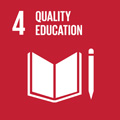- Docente: Andrea Annese
- Credits: 12
- SSD: M-STO/07
- Language: Italian
- Moduli: Andrea Annese (Modulo 1) Davide Dainese (Modulo 2)
- Teaching Mode: In-person learning (entirely or partially) (Modulo 1); In-person learning (entirely or partially) (Modulo 2)
- Campus: Bologna
-
Corso:
Second cycle degree programme (LM) in
Cultural Anthropology and Ethnology (cod. 0964)
Also valid for Second cycle degree programme (LM) in History and Oriental Studies (cod. 8845)
-
from Feb 10, 2025 to Mar 21, 2025
-
from Mar 31, 2025 to May 16, 2025
Learning outcomes
By the end of the course the student knows the sources and historical evolution of the churches as well as the contribution of Christianity to the history of cultures and the history of relations with other religions. He/she is also introduced to the application of the historical method and to its relations with other methodologies (especially with regard to the social sciences), in relation to religious history.
Course contents
The 6 cfu course coincides with the First Module (for the MA in History and Oriental Studies and for students of the MA in Cultural Anthropology who choose such module) or with the Second Module (for the MA in Italian Culture and Language for Foreigners and for students of the MA in Cultural Anthropology who choose such module). The 12 cfu course includes both the First and the Second Module.
First Module (Andrea Annese)
The Nag Hammadi Codices and Christian Gnosticism in Antiquity
Found in Egypt in the winter of 1945/1946, the Nag Hammadi codices proved to be one of the most important discoveries of ancient texts: they contained apocryphal gospels, numerous Gnostic writings, Hermetic texts and even a fragment of Plato’s Republic. Along with other ancient evidence on the various forms of Gnosis, the Nag Hammadi texts have stimulated scientific studies but have also had a broader cultural impact, for example in literature, philosophy and cinema, from Borges to Eco, from The Truman Show to The Matrix.
The course will offer a detailed analysis and historical and cultural contextualization of the codices, with a focus on the complex phenomenon commonly named “Gnosticism,” one of the most important and influential religious movements (or group of movements) of Late Antiquity. Specific attention will be paid to Christian Gnosticism that flourished between the 2nd and 3rd centuries CE, a sophisticated reinterpretation of early Christian, Jewish, philosophical Greek and (in some cases) Egyptian sources and traditions, which was soon considered “heretical” by the mainstream Christianity of that time.
The course will start with a methodological introduction to the study of the Nag Hammadi codices and the definition of “Gnosticism” and will illustrate the relationships between Gnosticism and both early Christianity and other religious and cultural traditions. Then the main extant sources will be presented: the Nag Hammadi manuscripts and other Coptic codices found in Egypt; Greek and Latin sources, etc. Ample time will be reserved for the reading and commentary of several treatises discovered at Nag Hammadi and a selection of other sources useful for delving into the history, doctrines, and practices of the main Christian Gnostic currents, and for understanding the reasons for their influence over more than fifteen centuries.
Second Module (Davide Dainese)
Christianity and the state from Antiquity to the Contemporary Age.
Carl Schmitt, in Political Theology (1922) had argued that political concepts were secularized theological concepts. This famous thesis initiated, during the twentieth century, a heated debate on the relationship between the sphere of the political and that of the theological.
The module aims at discussing some historically found patterns in a diachronic path that interweaves the history of biblical exegesis and the history of law.
The following topics will be focused on in the course of the lectures:
- Antiquity: the Constantinian paradigm and its declinations
- The use and reuse of biblical-patristic models in the long run
- Violence and religion: the problem of war
Readings/Bibliography
First Module
Exam bibliography:
1) A. Annese, F. Berno, D. Tripaldi (eds.), I codici di Nag Hammadi. Prima traduzione italiana integrale, Carocci, Roma 2024, only the following sections:
a) A. Annese, F. Berno, D. Tripaldi, (Ri)leggere Nag Hammadi: un’introduzione; b) Preghiera dell’Apostolo Paolo; c) Apocrifo di Giacomo; d) Trattato Tripartito; e) Vangelo secondo Giovanni segreto (see also the Introduction to the Apocrifo di Giovanni, pp. 243-245); f) Vangelo secondo Tommaso; g) Vangelo di Filippo; h) Esposizione sull’anima; i) Dialogo del Salvatore; j) Apocalisse di Paolo; k) Prima e Seconda Apocalisse di Giacomo; l) Apocalisse di Pietro; m) Le tre stele di Set; n) Lettera di Pietro a Filippo; o) Testimonianza di verità; p) Marsanes; q) Interpretazione della conoscenza; r) P. Buzi, I codici di Nag Hammadi e lo sviluppo della letteratura copta: brevi note su una relazione complessa.
2) C. Markschies, La gnosi, Claudiana, Torino 2019.
3) N. Denzey Lewis, I manoscritti di Nag Hammadi. Una biblioteca gnostica del IV secolo, Carocci, Roma 2019, only chapters 6, 7, 8, 10, 12, 14, 18, 19.
4) Selection of other ancient sources analyzed during the course: brief excerpts that will be made available by the teacher on Virtuale (also for non-attending students; in case of questions, please contact the teacher). List: Irenaeus, Adv. haer. I,29; Ptolemy, exegesis of John's Prologue; Epistle to Flora; Valentinus' Fragments; Irenaeus, "Great Notice".
Non-attending students will study Denzey Lewis’s book (n. 3 above) in its entirety. The rest of the bibliography is the same (nn. 1, 2, 4).
In case there are non-Italian speaking students who need to study the Nag Hammadi texts in other languages (English, French, Spanish, German), they are welcome to ask the teacher for information.
Second Module
Attending students should:
- study a text of their choice from among the following three:
Eusebio di Cesarea, Elogio di Costantino. Discorso per il trentennale. Discorso Regale, a cura di M. Amerise, Milano 2005.
Eusebio di Cesarea, Vita di Costantino, a cura di L. Franco, Milano (qualsiasi edizione disponibile).
T. Canella, Gli Actus Silvestri : genesi di una leggenda su Costantino imperatore, Fondazione Centro italiano di studi sull’alto Medioevo, Spoleto 2006.
- Study 4 essays of their choice in the following collective volumes:
A. Melloni – E. Prinzivalli – S. Ronchey (a cura di), Costantino 1. Enciclopedia costantiniana sulla figura e l'immagine dell'imperatore del cosiddetto Editto di Milano 313-2013, Roma 2013, voll. I, II, III
T. Canella, L’impero Costantiniano e i luoghi sacri, Bologna 2016.
- Read a book of their choice from:
- primary sources: C. Schmitt, Le categorie del politico, Bologna 2013, prima parte; E. Peterson, Il monoteismo come problema politico, Brescia 1983.
- historiography: P. Bettiolo – G. Filoramo, Il Dio mortale. Teologie politiche tra antico e contemporaneo, Brescia 2002; M. Scattola, Teologia politica, Bologna 2007; M. Rizzi, Cesare e Dio. Potere spirituale e potere secolare in Occidente, Bologna 2009; F. Monateri, Katechon. Filosofia, politica estetica, Torino 2023.
The only syllabus difference for non-attending students concerns the need to study all three books in the first section (i.e., T. Canella's monograph and the two works by Eusebius).
Teaching methods
Taught class; historical-critical analysis of sources; use of images and PowerPoint presentations (with maps, reproductions of manuscripts, etc.).
Assessment methods
Students who attend at least 75% of the lessons are considered to be attending.
Oral exam based on the subjects of the course and the books required. Students will be examined on their command of the specific vocabulary; on their knowledge of the topics of the course; on their ability to present clearly what has been learned; on their degree of acquisition of the methodological skills necessary for the study of ancient Christianity, illustrated during the course; on their ability to analyze problems and sources. Final Grade:
- knowledge of a very limited number of topics covered in the course, analytical skills that emerge only with the help of the teacher, poor command of vocabulary, poor clarity of exposition, methodological principles acquired in a barely sufficient way: grade 18-19;
- knowledge of a limited number of topics covered in the course, capacity for independent analysis little more than sufficient, sufficient command of vocabulary, fair clarity of exposition, methodological principles acquired at a fair level: grade 20-24;
- knowledge of a large number of topics covered in the course, ability to make independent choices of critical analysis, good command of specific terminology, good clarity of exposition, good competence in the methodological principles of the discipline: grade 25-29;
- very thorough knowledge of the topics covered in the course, excellent ability to make autonomous choices of critical analysis and logical connection, full command of specific terminology and excellent argumentation skills, high familiarity with the methodological principles of the discipline: grade 30-30L.
For the First Module, exam sessions are scheduled for the following months of the academic year:
February, March, May, June, July, September, October, December (one session for each of these months). Sessions are available for all students (if not otherwise noted in AlmaEsami).
As for the Second Module: January, February, May, June, July, September, November, December.
Teaching tools
Transcripts and scans of sources (uploaded among the teaching materials on Virtuale); images, PowerPoint presentations.
Students who require specific services and adaptations to teaching activities due to a disability or specific learning disorders (SLD), must first contact the appropriate office: https://site.unibo.it/studenti-con-disabilita-e-dsa/en/for-students.
Office hours
See the website of Andrea Annese
See the website of Davide Dainese
SDGs



This teaching activity contributes to the achievement of the Sustainable Development Goals of the UN 2030 Agenda.
